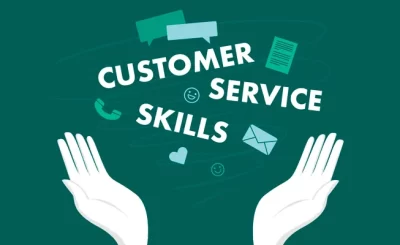Developing a customer-centric culture involves commitment and investment from all across the organisation, from the C-suite to frontline employees. From the company core outwards to employees, all must learn and work tirelessly at living and working according to the company values so that they can place your customers first in everything they do.
An organisation that prioritises customer-centricity delivers goods and experiences that effortlessly fit into customers’ lives.
Define Your Values
Just like a house, your business should be built on a solid foundation of values. They serve as the basis for everything you do and can help you establish both short- and long-term goals.
Starting with an exploration of your own life and what has been the most meaningful to you: it may be features or achievements of others that you admire, it may be moments when you felt at your best, when you were proudest about something you did.
This might mean that, as you explore your values, your thinking will evolve (and that’s OK – knowing yourself is a process and a dynamic one; you will likely have some ‘false positives’). To keep yourself grounded and accurate, simply check in with yourself (regularly) on why something was or wasn’t a better option or a worthwhile goal – as this provides the best self-reflection about who you might be, and hopefully more character advancement in the process.
This in turn will allow you to note any areas in your life requiring more attention to their values congruence, and to devise a strategy for remedying any deficiencies.
Create a Values Map
Value maps are a form of visualisation that helps you chart how your business creates, delivers and retains value for its stakeholders; what core resources and activities drive that proposition and where you embrace customer relationships and channels as well as revenue streams and how you optimise it against expenses.
To wit: one person’s value-mapping sheet showing ‘benefits’ against ‘price’ on an ‘equivalence slope’, which assumes a direct mutual conversion of customer benefit and features of the product in question.
Here the best way to learn is taking your customers’ view, though few firms recognise just how challenging this can be. Even better, keeping your value map up to date as the environment changes and identifying benefits that might accelerate strategic ends or help reach audiences can never but improve insights. Box in people controlling production for just this skill.
Invest in Employee Training
Your employees are not exclusively responsible for customer service — it should be part of the company-wide approach, and this can be done only by teaching and enviroment of customer service from top to bottom.
One simple way to start is with ‘whole company support’ – the whole company supports customers at all times, from all teams. For example, people on engineering teams can stop writing code for a few minutes to hear what people have to say about their product. Marketing people can spend some time learning about what people dislike about the product.
At the same time, it is vitally important that companies have strong knowledge-management platforms that make it easy for every team to access the customer data necessary for them to deliver a high-quality experience. This in turn empowers all employees to over-deliver – that is, to provide exceptional service to customers – and should motivate employees to follow customer-centric behaviour to deliver exceptional experiences for every person who in any way encounters your brand. By pursuing these tactics, and by creating a culture with exceptional experiences for every touchpoint – that is, the person has a great experience ‘with’ it each and every time they engage with it.
Create a Values Culture
One of the biggest hurdles in building a customer-centric culture is helping everyone in your organisation see how and why their work directly impacts your company’s mission; utilising your values by defining them and clearly communicating them – both in individual job descriptions and through onboarding new employees – are two straightforward ways you can help new and existing team members see how they can map themselves onto your vision from day one.
Getting everyone on board with your customer-centric dream is not easy, but essential if it is to endure. Concentrating on people not processes, or structures but teams – these are the essential spices to long-term success.
Using these six steps will create a climate in which the customers and team collaborate to achieve them and, in turn, will create loyal, happy, profitable customers and buy-in to a culture that supports it all. Andrew is a soak-up-the-meme-culture-like-a-sponge, all-day java drinker, father of Persie the cat, and Growth Marketing Manager at Nextiva.








